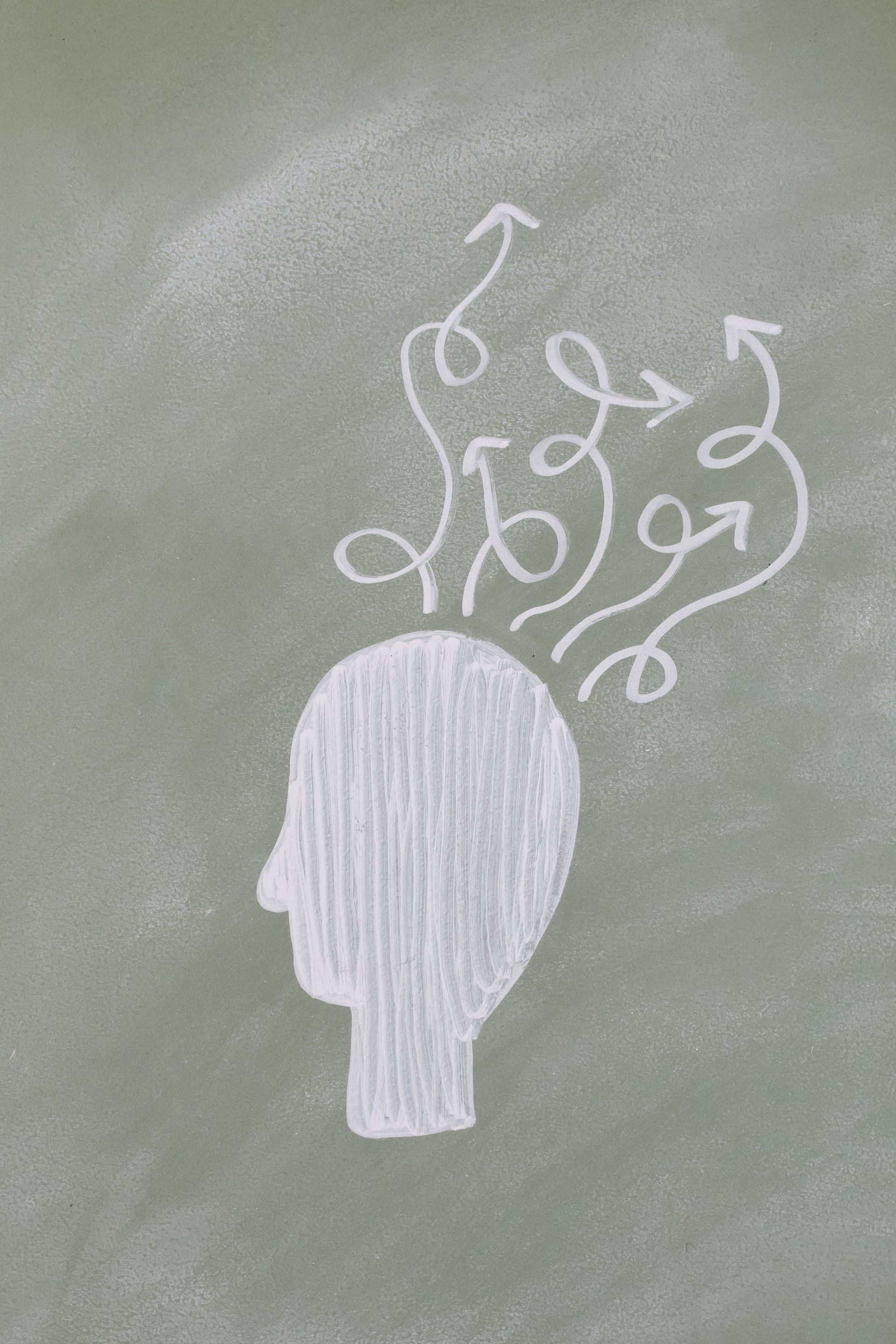Mental Notes
by MindMelody, PLLC.
Slowing the Traffic in Your Head: The Art of Mindfulness

Have you ever found yourself thinking incessantly about all the things on your to-do list? Thoughts seem to zoom in and out of your mind like vehicles trying to avoid 18-wheelers on a busy freeway during rush hour. Maybe you’ve been ruminating on the history of your existing situation or considering the next steps for your future endeavors. Perhaps you’ve been struggling with relationship woes or family matters. Maybe there’s a situation at work that has been keeping you up at night. These never-ending thoughts appear to consume your time and affect your energy and productivity levels. Perhaps your heart rate increases, you feel knots in your stomach, your appetite has changed, or a heaviness comes over you and achieving an adequate night of rest becomes a struggle. You may even feel stuck and unsure of how to pull yourself out of the mire long enough to catch your breath. If any of these situations resonate with you, then perhaps it’s time to learn new ways to calm yourself amidst the heavy traffic in your mind, through the practice of mindfulness.
As a widely used technique among Buddhist and Hindu religious affiliations, this ancient practice has been modified and adapted over time. The American Psychological Association defines mindfulness as the “Awareness of one’s internal states and surroundings” (APA, 2018). This familiar approach is often practiced alongside other commonly utilized therapeutic interventions. It has been proven to be extremely effective to aid the individual in strengthening their ability to perceive their thoughts, feelings and situations through a calming, and nonjudgmental lens. This technique in turn may help the individual to reduce symptoms that accompany physical discomfort, excessive worry, looming sadness and hopelessness as it creates space for clearer reflection. Allowing the individual the opportunity to become more reflective, deepening introspection, thereby enhancing self-awareness and reducing the likelihood of reactivity.
If you’ve ever met an adult who struggles to self-regulate once triggered, they are likely someone who has yet to develop sound self-awareness and the ability manage their emotions. Furthermore, they have not yet discovered those helpful methods to modify their automatic responses to the perceived threat. To better understand what this may look like in real time, let’s look at an example. Recall if you will, a situation where you witnessed (or saw a video) of someone becoming irate in public.
A Failure to Practice Mindfulness:
A customer storms into a local fast-food restaurant and becomes belligerent towards the cashier after receiving their order via drive- thru and realizing it was incorrect. The fact of the matter is the cashier took the order as they heard it presented via the drive-thru’s speaker system. However, neither the cashier nor the customer repeated the order to confirm accuracy. Upon confrontation, the cashier naturally becomes defensive and does not oblige the customer’s demands. Then an argument ensues between them. The manager of the restaurant emerges from the kitchen to intervene. The customer refuses to calm down or cooperate. The manager then asks the customer to leave the establishment and threatens to call law enforcement if they don’t immediately vacate the premises. While the customer may have had the full right to be upset about the incorrect order, the methods in which they chose to handle the situation obviously did not produce favorable results. Their reactivity to the stressor did not alleviate their frustration and left both the cashier and manager agitated for the duration of their shift.
A few things may have contributed to the customer’s outburst, (i.e., unrelated stress, physical discomfort, negative mood, etc). Had they chosen to practice a mindfulness technique prior to the interaction with the cashier, they may have been able to better navigate their existing emotional state to prevent further arousal. Much too often, we allow the things on our minds to dictate our moods which later negatively impact our behaviors. The customer may have had fifty things on their mind and been in an awful mood prior to entering the drive thru. However, it was solely this individual’s responsibility to govern themselves accordingly, regardless of the traffic jam of thoughts that may have bottle-necked in their mind. Learning to regulate our emotions is a clear depiction of maturity on many levels. A person who can effectively communicate even when frustrated, without becoming harmful is perceived as balanced and inwardly aligned. This person can be trusted and will likely experience a higher degree of positive outcomes from their interactions with others.
Mindfulness Techniques to Try:
- Becoming aware- Recognizing your mood and observing how your body is feeling
- Focusing- Paying attention to what is happening in the present moment without giving thought to past or future events
- Accepting- Allowing yourself to accept whatever you may be experiencing internally without the need to label the thoughts or feelings as “good” or “bad”
- Observing- Realizing what you’re experiencing is a temporary state without any evidence of foreseen permanency
If the customer had checked in with themselves prior to entering the restaurant, using the mindfulness approach, the situation could have played out much differently.
Demonstrating Mindfulness:
A customer parks their vehicle after receiving an incorrect order from the drive-thru of a local fast-food restaurant. The customer is annoyed that they will need to go inside the restaurant to have the order corrected. Before turning off the ignition, they take a moment to check their reflection in the vanity mirror. They realized that the headache they’d had all afternoon is contributing to their agitation, and they decided to take a few sips of the cold beverage they’d just purchased. They briefly recalled the work-related situation that led to the onset of the headache. Then opted not to worry about it at the moment as it is not something they could immediately fix. The customer allows themself to feel their frustration for a few moments before considering how easily unintentional human error can lead to miscommunication. They take a few deep breaths before exiting the vehicle. Entering the establishment, they approach the cashier with a warm smile. The customer then explains the inaccuracy of the order and kindly asked that it be corrected. The cashier then reviews the customer’s receipt, then highlights and apologizes for what was heard versus what the customer reportedly said. The customer acknowledged that mistakes happen and would appreciate a correction. The cashier obliges and, for the inconvenience, does not charge the customer for the additional items. The customer expresses gratitude and returns to their vehicle. Clearly, deciding to take a mindful approach to remedy the situation was in the best interest of the customer, and eliminated the transference of negative emotions to the restaurant’s staff.
If we consciously commit to owning our thoughts and feelings, then we have a greater chance of producing and influencing positive behavioral outcomes for ourselves and those around us. Practicing mindfulness daily allows the individual to recenter and refocus. Therefore, when stress-provoking experiences arise, this individual is far more equipped to manage their emotion and responses.
For as long as we live, there are few things that are inevitable. There will always be:
- Something we are responsible for
- Something that causes us emotional or physical discomfort
- Something that will disappoint us
- Something that will change around us or within us
Practicing these simple steps each day will help you to become much more self-aware, and emotionally responsible in the face of adversity. Using mindfulness tools will help you to maneuver within the hectic inner traffic events of the mind when the inevitable manifests on any given day.
For more tips and tricks, check out:
The Mindfulness-Based Emotional Balance Workbook by Margaret Cullen and Gonzalo Brito Pons.



